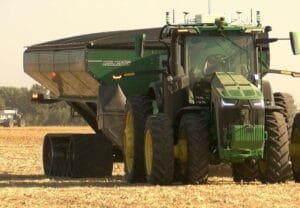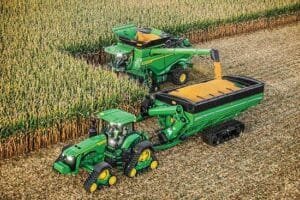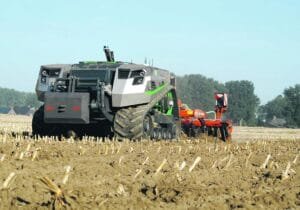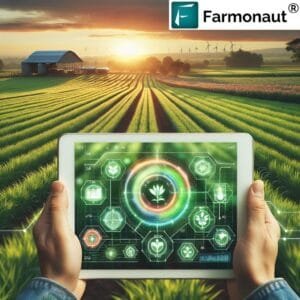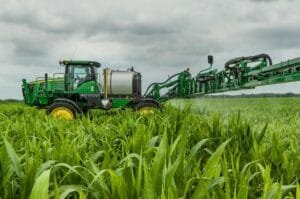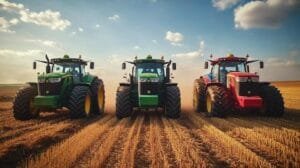Precision farming, once the distant horizon of agricultural innovation, is now woven into the daily tapestry of farm management. As technology gallops onward—leaving behind some who still adore weathered tractors and pen-and-paper logbooks—a comprehensive suite unites disparate digital tools under one pragmatic umbrella. Thus, fields transform with binary pulse rather than mere muscle.
## Precision Technologies: A Diverse Ensemble
Satellite crop imaging currently stands as a linchpin technology. Once only space agencies’ domain, now any grower with a handheld device can summon near-real-time crop health maps. Entire tracts become mosaics of knowledge, where spectral readings flag invisible stress long before eyes could spot wilted leaves or fungal encroachment. With these images—some blurry on cloudy days yet insightful nonetheless—farmers pinpoint sections plagued by nitrogen fatigue or fungal hotspots.
Sometimes interpreted in boardrooms as “large-scale yield optimization,” at ground level it means less fertilizer dumped en masse and more precisely into zones hungry for nutrients. The idea is not simply boosting output; sometimes it’s about damage mitigation before economics dictate a swift decline in plant quality. Remote field monitoring pairs neatly here: alerts sent over cellular networks bring color-coded urgency to dinner tables far from the fields.
Shifting focus now—the suite deepens with soil health analysis protocols that borrow language from geology as much as agronomy. Using penetrometers meant for dense earth rather than pastry dough (though confusion might offer comedy), farmers gauge compaction and nutrient distribution below the furrows. Layered atop this are electrical conductivity maps tracing texture gradation where past rainfall cheats forecast models.
But without robust GPS receivers humming quietly beneath polished dashboards, few sweeps would align properly from season to season. These devices, guided by constellations most have never seen unaided but rely on religiously during planting and harvesting alike, serve as nerve centers for data accumulation anachronistically labeled “recordkeeping” by industry veterans. Not just waypoints marking irrigation laylines—they blend navigation with strategy.
## Integrating Data Streams: Complexity Wrapped in Simplicity
Farmers today often juggle touchscreens crowded with icons above machine cabs adorned like UFOs spotted at midnight country crossings—a peculiar sight when thunderstorms roll through at planting time! Variable rate technology shrugs off uniformity; different rows receive differential doses based on what last year’s data (and anxious consultants) recommend.
IoT-connected sensors create another fabric layer uniting barn interiors and open fields within WiFi reach—but occasionally hindered by finicky rural signals or ornery roosters unplugging routers out of mischief more than necessity. Nonetheless, real-time analytics climb aboard through cloud interfaces accessible even while hauling feedbags across muddy yards: this democratizes sophisticated insights so they don’t simply linger behind locked office doors.
A logical hiccup arises here, though—the promise that every sensor harmonizes seamlessly ignores inevitable glitches both human and electronic; battery failures can cause lapses just when operators need moisture readings most desperately! Yet agronomists argue that’s part of embracing ingenuity over rigidity—they rally around adaptive recalibration instead of demanding flawlessness up front.
Moving sideways slightly: Field mapping tools embody both artistry and science—farmers render colorful boundaries overlain upon prior years’ triumphs and blunders.
Sometimes these apps cause minor annoyance due to interface clunkiness—or perhaps operator impatience rooted in anticipation for coffee breaks—while other times they unlock previously undervalued patches whose productivity alters farm economics completely.
## Professional Challenges Amidst Innovation
Of course there’s grumbling about adoption costs dovetailing awkwardly with skepticism toward newfangled solutions owned by multinational giants promising greener tomorrows yet delivering complex setups requiring hours spent deciphering phone help menus. Some bemoan connectivity gaps which thwart intended telematics handshakes between tractor fleets scattered miles apart across patchwork county lines.
Government policies bubble up occasionally fostering curiosity if not always clarity; still others recall those halcyon days before digital notifications chimed incessantly like cicadas after summer rain.
Education programs strive—in fits and starts—to bridge generational know-how gaps alongside software tutorials brimming with jargon unfamiliar outside university classrooms.
For those leery or weary? Sometimes encouragement emerges disguised within neighborly advice passed at rural cafes during pre-dawn breakfast rituals after overnight thunderstorms leave tire tracks buried under fresh mud.
Worth noting here—a collective effort flows forward anyway.
A John Deere platform connects machinery outright while drawing people together virtually around streamed datasets oft-ignored until crunch-time beckons abruptly because hail threatens next week’s profits.
At twilight when fog creeps low across furrowed ground littered both old boots forgotten since spring thaw melted snowdrifts away—and digital screens flicker alive inside heated pickup trucks—it becomes evident:
Precision farming technologies are stitched unevenly but firmly into agriculture’s broad cloth,
yielding power greater than any single instrument could muster alone—even if perfection remains elusive like an honest politician at harvest festival speeches.
Some things change faster than anticipated,
while others remain solid beneath shifting strategies—for every farmer who resists another upgrade there wait two ready to script data-driven homilies onto spreadsheets next winter beside woodstoves humming contentedly against bitter wind beyond windowpanes dust-flecked from seasons past.


